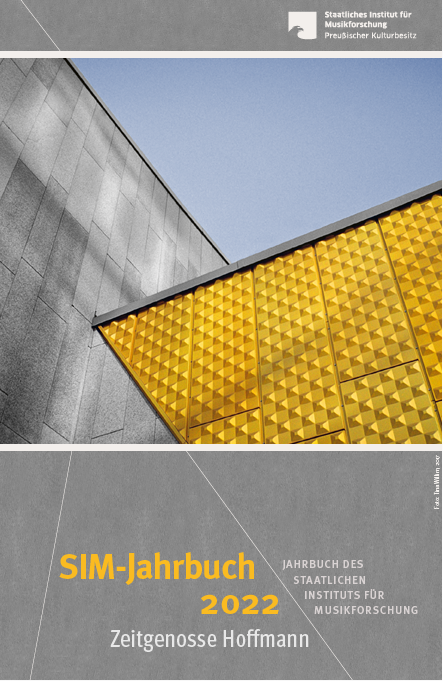Rätselhafte Automate
E. T. A. Hoffmanns Erzählung »Die Automate« als Ästhetische Theorie?
DOI:
https://doi.org/10.71046/simjb.2022.27Schlagworte:
Ästhetische Theorie, Rätselcharakter, Adorno, FragmentAbstract
E. T. A. Hoffmanns Die Automate aus dem Jahr 1814 ist eine rätselhafte Erzählung über einen rätselhaften sprechenden Automaten. Ausgehend von der These, dass Hoffmann in der Erzählung anhand der rätselhaften Sprechmaschine sein Konzept ästhetischer Gebilde inszeniert – der Automat weist zahlreiche Merkmale von Kunstwerken auf und wird wiederholt als ein solches bezeichnet –, und durch die Parallelisierung des so dargestellten Verständnisses von der Form ästhetischer Gebilde mit den ästhetischen Überlegungen Theodor W. Adornos erweist sich nicht nur die Verwandtschaft der Hoffmann’schen Ästhetik mit derjenigen Adornos, sondern es zeigt sich auch, inwiefern gerade Adornos Begriff vom Rätselcharakter der Kunstwerke dazu geeignet ist, das Rätselhafte von Hoffmanns Erzählung, das – im Gegensatz etwa zu Edgar Allan Poes Essay Maelzel’s Chess Player von 1836 – bewusst nicht aufgelöst wird, als Bestandteil eben dieser Ästhetik aufzuweisen. So zeigt sich die Lösung des unlösbaren Rätsels der fragmentarischen Erzählung in der in der Rahmenhandlung der Serapionsbrüder vorgenommenen Affirmation der Kunst und des durch sie möglichen Aufschließens einer Welt jenseits der Dinglichkeit. Vor diesem Hintergrund wird E. T. A. Hoffmanns Erzählung Die Automate lesbar als ein Stück literarisierte ästhetische Theorie.
Enigmatic Automata. E. T. A. Hoffmann’s Tale ›The Automata‹ as Aesthetic Theory?
E. T. A. Hoffmann’s The Automata (1814) is a mysterious tale about an enigmatic talking machine. Starting from the thesis that Hoffmann uses the uncanny speaking automaton to stage his concept of aesthetic constructs – the automaton displays numerous characteristics of a work of art and is repeatedly referred to as such – and by drawing parallels between this portrayal of aesthetic form and the aesthetic theories of Theodor W. Adorno, the affinity between Hoffmann’s aesthetics and Adorno’s becomes apparent. Furthermore, Adorno’s notion of the enigmatic character of artworks proves particularly apt for interpreting the mystery of Hoffmann’s tale – a mystery that, unlike in Edgar Allan Poe’s essay Maelzel’s Chess Player (1836), remains deliberately unresolved – as an integral part of the story’s aesthetic. The resolution of this unsolvable riddle appears in the frame narrative of The Serapion Brethren, through an affirmation of art and the access it grants to a world beyond materiality. In this light, Hoffmann’s The Automata becomes readable as a piece of literary aesthetic theory.
Downloads
Veröffentlicht
Zitationsvorschlag
Ausgabe
Rubrik
Lizenz
Copyright (c) 2025 Benjamin Schlodder

Dieses Werk steht unter der Lizenz Creative Commons Namensnennung 4.0 International.



